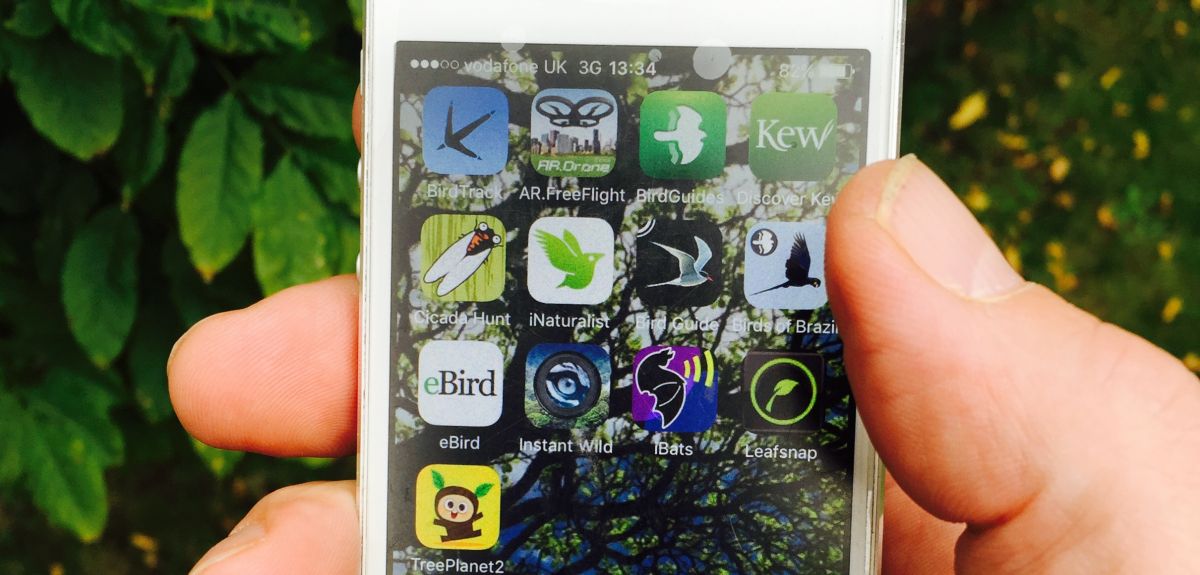
Are nature apps interesting enough?
The full potential of nature apps for getting the public more interested in ecology and conservation is not being exploited enough, says a new study.
The research, which appears in the journal Ambio, says while there are some good examples of imaginative products, far more could be done to interpret visits to nature reserves or link up with central biodiversity sites using apps. The ‘holy grail’ of nature-based apps would be one that could identify a bird call or animal noises, which would not only engage the public but also might help scientists classify and assess the health of the natural world, says the research.
Dr Paul Jepson and Professor Richard Ladle analysed nature-themed apps on the Google Play store five years after the launch of the Android market in 2009. They retrieved 6,300 apps that had any sort of nature theme, a 'tiny' fraction of over one million available apps. They found that the majority were personalisation apps (41%), such as wallpapers and ring-tones, and games (37%).
There were lots of book and reference apps (19%) and apps for activities such hunting, fishing and birding (12%), but only 3.9% were for visitor attractions, such as parks, zoos, museums, aquariums, botanical gardens. An even smaller proportion (0.5%) related to citizen science projects. Most of the apps studied in this sample were add-ons, such as those incorporating audio song files into field guides or transforming traditional nature book formats to a mobile digital version.
The researchers highlight the success of franchises like Angry Birds or Flappy Bird as examples showing the potential of using animal animations as they are hugely popular with the public. The most downloaded nature-related game apps were those replicating hunting experiences, such as Deerhunter 3D, where players scored points for killing or catching animated animals. The study says the 'stand-out' game app for conservation was Tree Planet, developed by a Korean company, where players plant and nurture a tree, rewards good players with the opportunity to plant a real tree on a reforestation site.
Sadly, our study suggests that, to date, conservation organisations are not harnessing the full potential of apps.
Dr Paul Jepson, Oxford School of Geography and the Environment
Apps created for visitors to nature attractions or those taking part in nature-based pursuits had the best functionality and showed the most innovation, says the study. These often integrated the smartphone's GPS and compass functionality with map caching to support navigation, record observations and send alerts of interesting sightings to other users. Several hunting apps even had audio lures to attract game and provide 3D landscape visualisations of the locations of other hunters. The researchers found that an app for London's Kew Gardens was one of the few attraction apps that really made the visitors’ experience more rewarding with clever ways of interpreting the exhibits for the user.Of 755 nature-based recreational apps, 219 had the ability to log sightings, but only 25 gave users the facility to upload these to biodiversity monitoring schemes.
Surprisingly, only 17 of 33 citizen science project apps had this functionality. Most citizen science apps focused on recording target species or diseases. iBat (Indicators Bats Programme for the Zoological Society of London) and New Forest Cicada Hunt (University of Southampton), which integrates crowd sourcing, sensor capabilities, and super computer power, had the greatest functionality, according to the study. It says Zooniverse, a citizen science project based at the University of Oxford, did well in the analysis in engaging thousands of volunteers who took part in classifying, extracting and discussing visually reproduced data, such as images of the galaxy in the Galaxy Zoo project.
Lead author Dr Paul Jepson said: 'The ability of apps to record and transmit casual, geo-located, nature observations creates real possibilities to transform conservation science. The public could help in gathering data, and they in turn could become far more excited about the natural world. Sadly, our study suggests that, to date, conservation organisations are not harnessing the full potential of apps. As most people own a mobile phone today, the app – though a small device – is a major way conservationists could be reaching a huge audience with transformative possibilities.'
Professor Richard Ladle added: 'Greater collaboration with university-based information engineers and computer scientists could revolutionise the potential of nature-based apps, increasing both their functionality and usefulness in helping conservationists.'
The full paper, 'Nature apps: Waiting for the revolution,' appears in the journal Ambio.
 New study estimates NHS England spends 3% of its primary and secondary care budget on the health impacts of temperature
New study estimates NHS England spends 3% of its primary and secondary care budget on the health impacts of temperature
 International collaboration launches largest-ever therapeutics trial for patients hospitalised with dengue
International collaboration launches largest-ever therapeutics trial for patients hospitalised with dengue
 Oxford-built multi-agent assistant for cancer care to be piloted in collaboration with Microsoft
Oxford-built multi-agent assistant for cancer care to be piloted in collaboration with Microsoft
 World's first Phase II Nipah virus vaccine trial launch
World's first Phase II Nipah virus vaccine trial launch